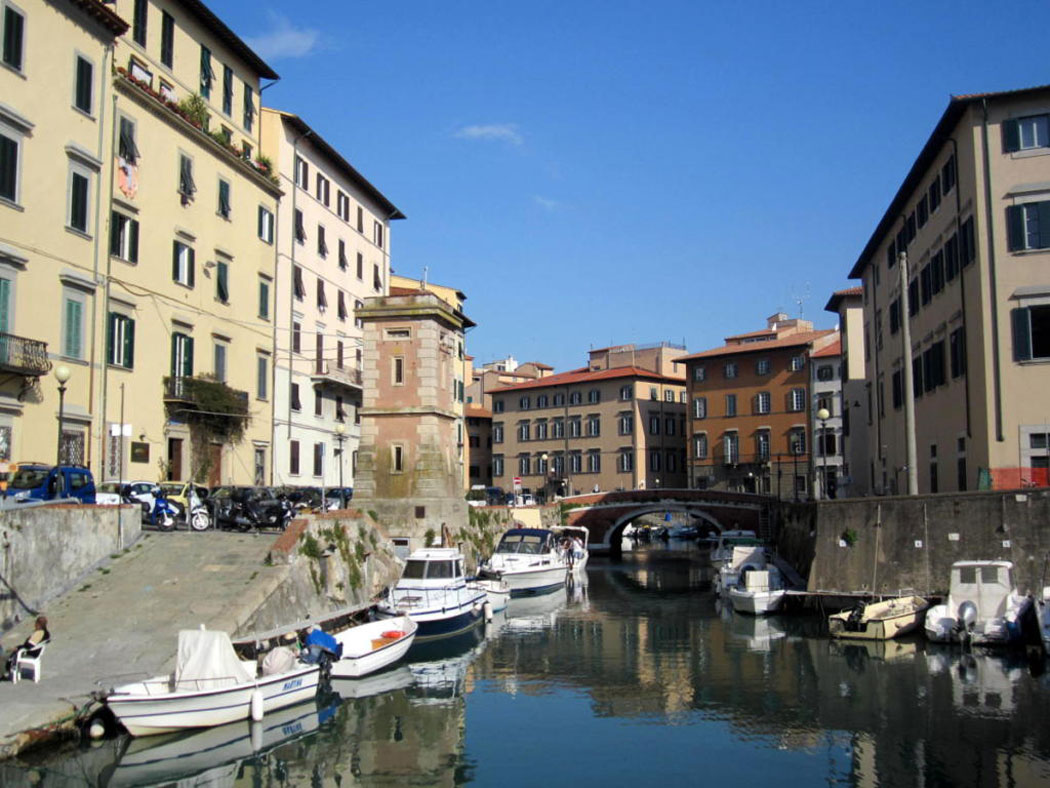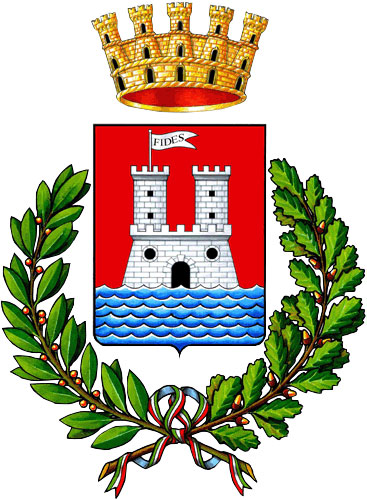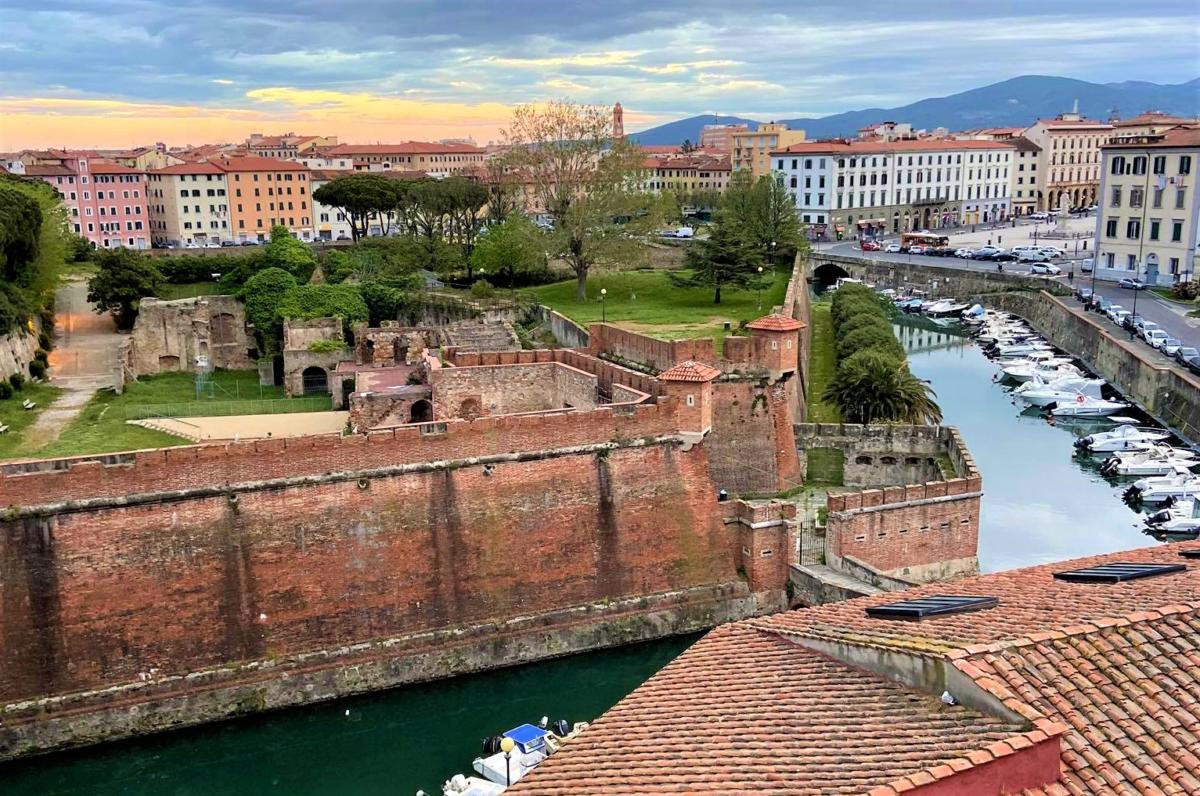

Livorno is a seaside city in Tuscany and in its territory is the island of Gorgona part of the National Park of the Tuscan Archipelago. It is a large commercial and tourist port and, as with all seaside cities, its history has been deeply marked by the encounter with different cultures.
The area was already inhabited during prehistoric times, then came the Etruscans and finally the Romans who called this coastal area Labrone, perhaps from Liburna which was the name of a boat of the time.
The first news of a castle called Livorna is found in a document of the bishop of Pisa of 1017. The territory for a long time had seen the supremacy of the Maritime Republic of Pisa which, with the silting up of its port due to debris carried by the river Arno had shifted its commercial and military interests towards the construction of a new port in Livorno.
In the thirteenth century the village was in existence and in the fourteenth century the city was fortified and the Fanale was built, the famous lighthouse of Livorno which is among the oldest in Italy.
After the end of the Republic of Pisa, the new city of Livorno was ruled by the Visconti family of Milan.
In 1407 it then passed under the control of the Republic of Genoa which sold it for 100,000 gold florins to the Florentines in 1421 to allow it to become the sea outlet of Florence. It was the Medici who commissioned the architect Bernardo Buontalenti to design a new fort with a defensive system and urban planning in the residential area.
A large pentagonal fort with ramparts at the top enclosed the city and was surrounded by a moat next to the Medici Port. At the centre of the city was the Duomo and the parade ground.
In the sixteenth century, the Medici decreed the city 'Porto Franco' and this immediately brought wealth by attracting merchants and shipping companies which, in turn, brought foreign consulates - British, Dutch, French, Corsican, Ragusans, Greeks, Armenians, Spaniards, Portuguese, Sardinians , Swedes, Danes, Austrians, Prussians.
The relationship between Livorno and Florence has always been faithful and the word FIDES in the urban coat of arms was granted by the Grand Duke after the help by Livorno against the siege of Florence by the Emperor Maximilian in 1496.
In 1591 and 1593 the Livornine Laws were promulgated which guaranteed freedom of worship for all and the city welcomed many Jews, mainly from Spain and Portugal, without locking them up in a ghetto. This freedom led to the creation of many different cemeteries which are still one of the unique characteristics of Livorno today.
In 1605-06 the Grand Duke Ferdinando I de Medici authorized the coat of arms and promoted Livorno to the rank of city.
By 1629 the city had grown commercially and a new part was built in the swampy area. Workers from Venice were called and the neighbourhood was characterized by houses and warehouses accessible by canals: and for this structure it took the name of New Venice.
In 1737, the extinction of the Medici family brought the Grand Duchy of Tuscany under the leadership of a junior branch of the Habsburgs-Lorraine who in practice governed it until the unification of Italy.
In 1776, the Grand Duke Pietro Leopoldo of Habsburg-Lorraine allowed the construction of buildings near the fortifications and the first suburbs were formed which gave the city a less militaristic structure.
After the interruption of the Napoleonic period, when Livorno was part of the Kingdom of Etruria, the Grand Dukes did many engineering works such as the aqueduct of Colognole and embellished the city with the new Goldoni theatre.
In 1835 the Grand Duke Leopoldo II enlarged the Porto Franco area with the construction of new walls called Cinta Daziaria and in 1844 a modern railway connected Livorno with Pisa and Florence.
In 1849, during the uprisings that occurred across Europe, the citizens of Livorno rose up against the Austrian rulers but the revolt was stifled by the army.
The Grand Duchy of Tuscany was annexed to the Sardinian Kingdom of the Savoy in 1860 with a popular referendum.
With the unification of Italy, the free port was abolished and this led to a decrease in commercial traffic. In 1868 Cavour promoted the creation of a single military naval school derived from the experience of the Savoy school of Genoa and the Bourbon school and set up its headquarters in Livorno. In 1878 the school became the Naval Academy.
Many prestigious buildings date back to the nineteenth century and the sumptuous Vettovaglie Market which for years has been the largest in Europe, big enough to be nicknamed the Louvre.
In the twentieth century, Livorno started a double activity as a commercial port and as a tourist resort with the Acque della Salute Spa. But it also enhanced its industrial vocation.
In 1921 the Italian Communist Party was founded in Livorno.
Livorno suffered heavy bombing during the Second World War which largely destroyed the city and totally wiped out the industrial area.
Among the illustrious people of Livorno are the great painter Macchiaiolo Giovanni Fattori, the artist Amedeo Modigliani and the musician and opera composer Pietro Mascagni (Cavalleria Rusticana).









Follow us